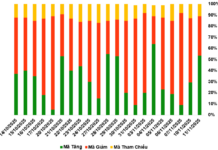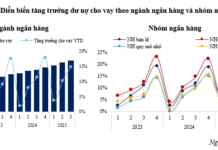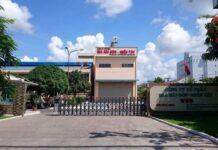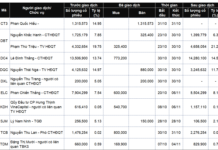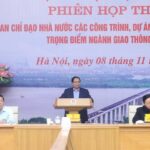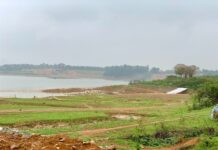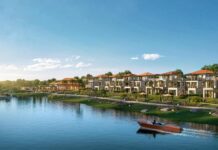The New Catalyst for Tay Ninh’s Real Estate Market
In a comprehensive report on Tay Ninh’s real estate market post-merger, the Vietnam Institute of Real Estate Research (VIRES) highlights the key drivers propelling the region’s property development—a rising investment hotspot in the new context.
The first driver stems from a robust economic foundation and high economic growth rate, anchored by industrial and border-gate economies. According to Tay Ninh Provincial People’s Committee, post-merger, the province’s GRDP growth for the first nine months of 2025 reached 9.52%, leading the Southeast region and ranking 8th out of 34 provinces and cities nationwide. This sustainable economic growth will significantly attract investment, providing the necessary impetus for the development of real estate, commercial services, and satellite urban areas.
Second is the inter-regional transportation infrastructure that has seen accelerated investment since 2023. Areas bordering Ho Chi Minh City, such as Duc Hoa, Ben Luc, and Can Giuoc (formerly part of Long An), now enjoy easy access to key Southern transportation arteries via Provincial Road 10 (connecting to National Highway 1A), Provincial Road 823 (linking to National Highway 22), and Provincial Road 824 (connecting to National Highway 22, HCMC-Trung Luong Expressway, HCMC-Moc Bai Expressway, and Ben Luc-Long Thanh Expressway).
Additionally, Ring Roads 3 and 4, expected to close by 2026 and 2027 respectively, will foster the creation of integrated economic-logistics and urban-civic belts.
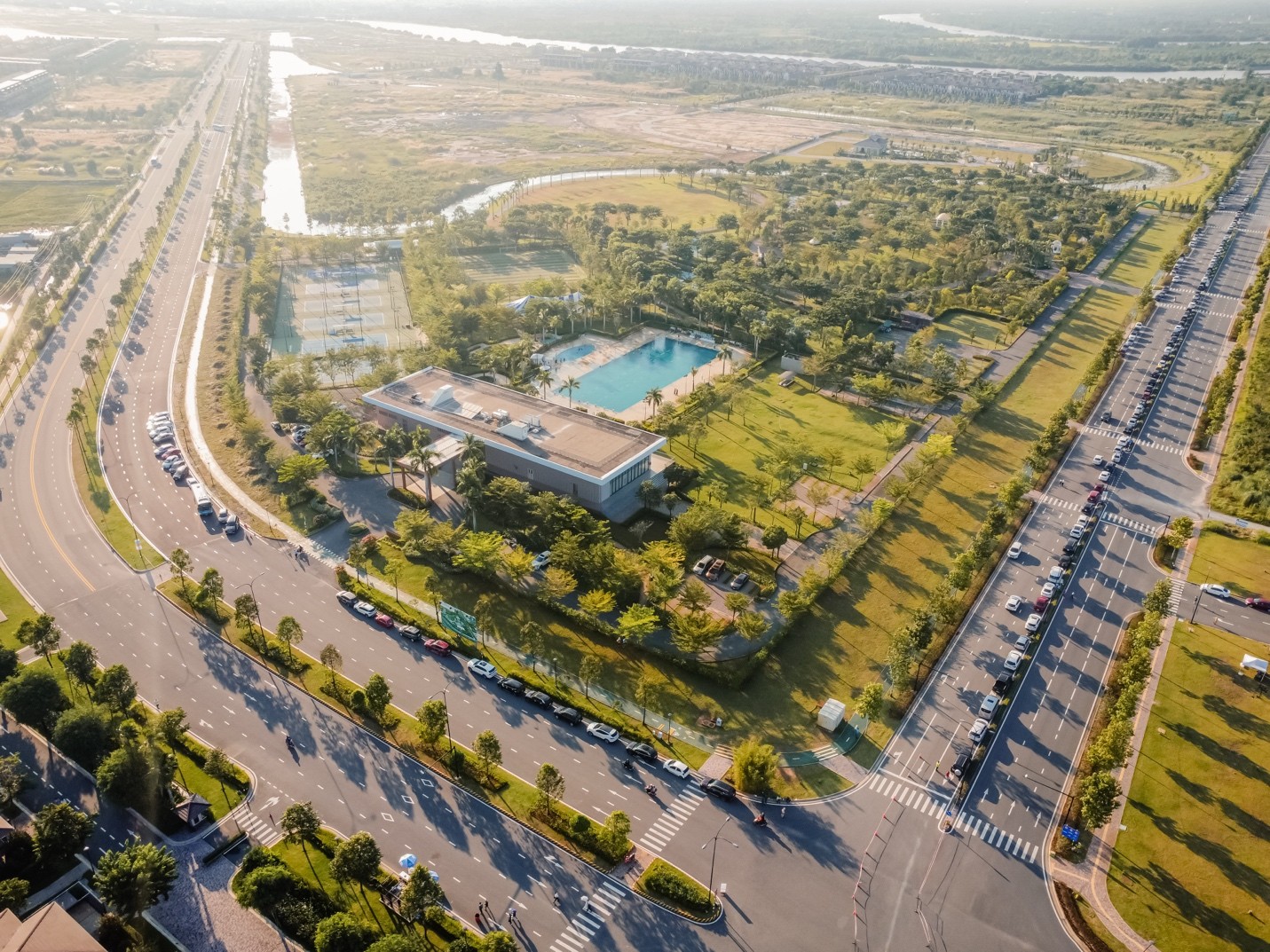
Infrastructure is a critical driver boosting Tay Ninh’s real estate market.
Third is the consistent industrial development strategy of the province. With 46 existing industrial zones and plans for 59 by 2030, Tay Ninh aims to become one of the nation’s leading provinces in industrial zone development.
Fourth is the shift of homebuyers from HCMC and its satellite cities to Tay Ninh. HCMC, long plagued by high population density and soaring property prices, is witnessing the strongest population outflow in history, drawn by Tay Ninh’s infrastructure advantages, abundant land, and lower property prices.
Fifth is the local government’s tangible efforts to improve the investment climate. The province’s 2024 PCI index ranks among the nation’s top, reflecting an increasingly favorable business environment.
Sixth is the influx of major players in industries like manufacturing, F&B, renewable energy, tourism, and real estate. This not only injects capital but also creates a ripple effect, enhancing competitiveness and shaping new industrial, urban, and tourism growth poles.
Lastly, the seventh driver is the emerging trend of integrated urban development along the HCMC border corridor. Numerous large-scale satellite urban projects are prioritizing the “all-in-one” model, with such projects rapidly taking shape.

“All-in-one” projects are rapidly shaping up.
Notable projects include Nam Long’s 355ha Waterpoint integrated urban area. The developer has launched The Pearl, a premium compound zone featuring riverside villas and townhouses, alongside the Solaria Rise high-rise zone offering nearly 700 units starting from VND 1.39 billion per unit.
Vingroup’s large-scale projects are also driving growth in HCMC’s western market. These include the 200ha Vinhomes Green City in Hau Nghia, Duc Hoa (now part of Hau Nghia Commune, Tay Ninh), launched in March 2025, and the 1,000ha Vinhomes Phuoc Vinh Tay Can Giuoc (Vinhomes City Royal) in Phuoc Vinh Tay, Can Giuoc, Long An (now Phuoc Vinh Tay, Tay Ninh), launched in August 2025.
Other projects like Eco Retreat by Eco Park, T&T City Millennia by T&T Group, La Home by Prodezi Long An, and An Huy My Viet by An Huy Group are multi-utility integrated urban areas featuring commercial services, healthcare, and education facilities.
According to VIRES, post-merger Tay Ninh is converging breakthrough drivers for economic and real estate market development. The Ben Luc-Duc Hoa-Can Giuoc border area, in particular, is emerging as a hotspot for real estate, services, and urban development.
Strong Price Growth for Townhouses and Villas
DKRA Consulting’s report highlights the townhouse/villa segment in HCMC and its satellite markets, showing a 64% supply increase and 5.9 times higher absorption compared to 2024, with 3,438 successful transactions. Long An (now part of Tay Ninh) leads, benefiting from major developers’ strong entry.
The firm notes that limited supply and high prices in HCMC are driving a clear “spillover” effect into satellite real estate markets, particularly for land plots and townhouses/villas.
CBRE’s latest data shows average primary prices in HCMC rising nearly 30%/year, with Binh Duong and Dong Nai at 14-15%/year, and former Long An leading at 90%/year. By 2027, HCMC, Binh Duong, Dong Nai, and Long An are projected to see price increases of 10%, 11%, 10%, and 19% for apartments, and -1%, 4%, 6%, and 12% for townhouses/villas, respectively.
Former Long An recorded the highest price growth for both apartments and townhouses/villas, largely due to its lower current price base and significant growth potential.
VIRES’ in-depth report indicates that as residents move from HCMC to nearby areas seeking affordable housing and better living environments, mid-range housing, adjacent townhouses, and affordable apartments will attract strong investment. New urban models, professionally planned and developed by major players, continue to draw investment capital.
Strategic Infrastructure Development: Expanding Growth Horizons for Private Enterprises to Become National Partners
In the pursuit of building strategic infrastructure—a cornerstone for sustainable development and deep integration—the private sector is recognized as a vital force driving the economy. It plays a pivotal role in co-creating national infrastructure and expanding the nation’s development horizons.
Prime Minister Pham Minh Chinh Holds Working Session with Thanh Hoa Provincial Party Standing Committee
On November 9th, Prime Minister Pham Minh Chinh, alongside leaders from various ministries and sectors, visited Yen Cuong commune in Thanh Hoa province. The visit coincided with the groundbreaking ceremony for new boarding primary and secondary schools in border communes. During the trip, the Prime Minister and his delegation held a working session with the Standing Committee of the Thanh Hoa Provincial Party Committee. The meeting focused on discussing the province’s socio-economic situation, public investment disbursement, the implementation of the two-tier local government model, future directions, tasks, solutions, and addressing proposals.




